Jian Wan
NEMO-4-PAYPAL: Leveraging NVIDIA's Nemo Framework for empowering PayPal's Commerce Agent
Dec 25, 2025Abstract:We present the development and optimization of PayPal's Commerce Agent, powered by NEMO-4-PAYPAL, a multi-agent system designed to revolutionize agentic commerce on the PayPal platform. Through our strategic partnership with NVIDIA, we leveraged the NeMo Framework for LLM model fine-tuning to enhance agent performance. Specifically, we optimized the Search and Discovery agent by replacing our base model with a fine-tuned Nemotron small language model (SLM). We conducted comprehensive experiments using the llama3.1-nemotron-nano-8B-v1 architecture, training LoRA-based models through systematic hyperparameter sweeps across learning rates, optimizers (Adam, AdamW), cosine annealing schedules, and LoRA ranks. Our contributions include: (1) the first application of NVIDIA's NeMo Framework to commerce-specific agent optimization, (2) LLM powered fine-tuning strategy for retrieval-focused commerce tasks, (3) demonstration of significant improvements in latency and cost while maintaining agent quality, and (4) a scalable framework for multi-agent system optimization in production e-commerce environments. Our results demonstrate that the fine-tuned Nemotron SLM effectively resolves the key performance issue in the retrieval component, which represents over 50\% of total agent response time, while maintaining or enhancing overall system performance.
Ask2Loc: Learning to Locate Instructional Visual Answers by Asking Questions
Apr 22, 2025Abstract:Locating specific segments within an instructional video is an efficient way to acquire guiding knowledge. Generally, the task of obtaining video segments for both verbal explanations and visual demonstrations is known as visual answer localization (VAL). However, users often need multiple interactions to obtain answers that align with their expectations when using the system. During these interactions, humans deepen their understanding of the video content by asking themselves questions, thereby accurately identifying the location. Therefore, we propose a new task, named In-VAL, to simulate the multiple interactions between humans and videos in the procedure of obtaining visual answers. The In-VAL task requires interactively addressing several semantic gap issues, including 1) the ambiguity of user intent in the input questions, 2) the incompleteness of language in video subtitles, and 3) the fragmentation of content in video segments. To address these issues, we propose Ask2Loc, a framework for resolving In-VAL by asking questions. It includes three key modules: 1) a chatting module to refine initial questions and uncover clear intentions, 2) a rewriting module to generate fluent language and create complete descriptions, and 3) a searching module to broaden local context and provide integrated content. We conduct extensive experiments on three reconstructed In-VAL datasets. Compared to traditional end-to-end and two-stage methods, our proposed Ask2Loc can improve performance by up to 14.91 (mIoU) on the In-VAL task. Our code and datasets can be accessed at https://github.com/changzong/Ask2Loc.
WCL-BBCD: A Contrastive Learning and Knowledge Graph Approach to Named Entity Recognition
Mar 14, 2022
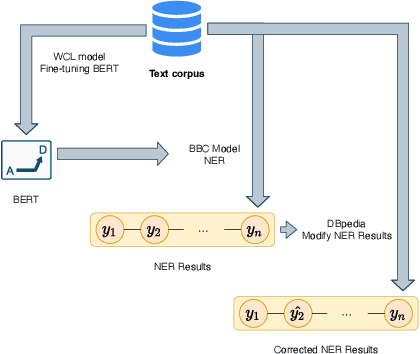
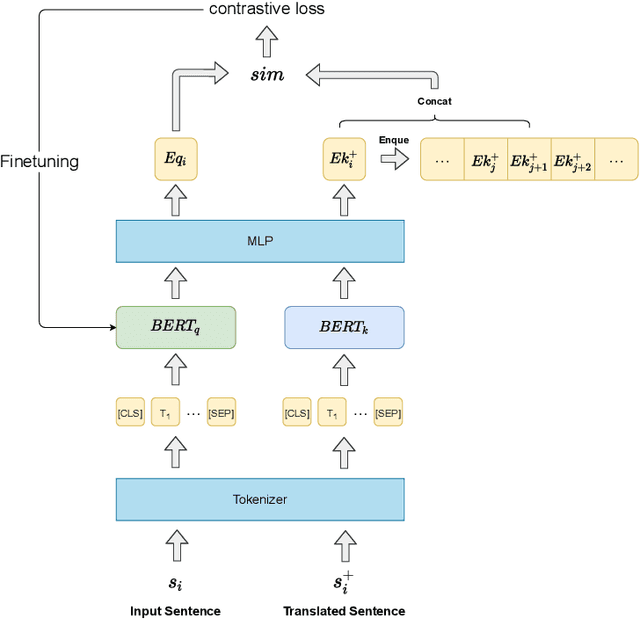
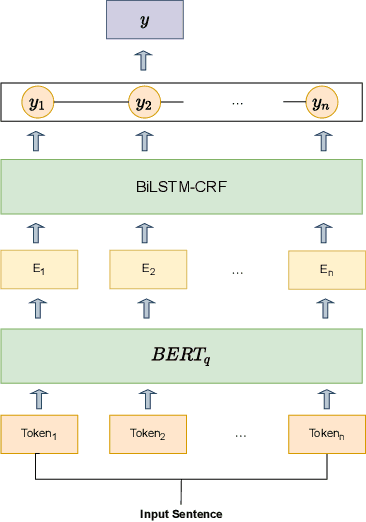
Abstract:Named Entity Recognition task is one of the core tasks of information extraction.Word ambiguity and word abbreviation are important reasons for the low recognition rate of named entities. In this paper, we propose a novel named entity recognition model WCL-BBCD (Word Contrastive Learning with BERT-BiLSTM-CRF-DBpedia) incorporating the idea of contrastive learning. The model first trains the sentence pairs in the text, calculate similarity between words in sentence pairs by cosine similarity, and fine-tunes the BERT model used for the named entity recognition task through the similarity, so as to alleviate word ambiguity. Then, the fine-tuned BERT model is combined with the BiLSTM-CRF model to perform the named entity recognition task. Finally, the recognition results are corrected in combination with prior knowledge such as knowledge graphs, so as to alleviate the recognition caused by word abbreviations low-rate problem. Experimental results show that our model outperforms other similar model methods on the CoNLL-2003 English dataset and OntoNotes V5 English dataset.
Interpretable Encrypted Searchable Neural Networks
Aug 14, 2019
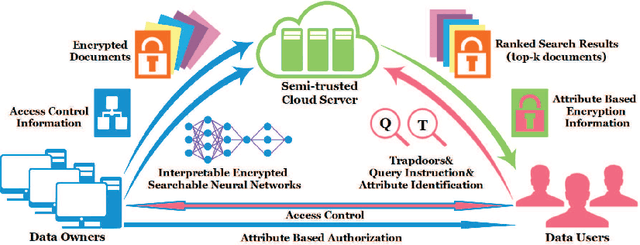
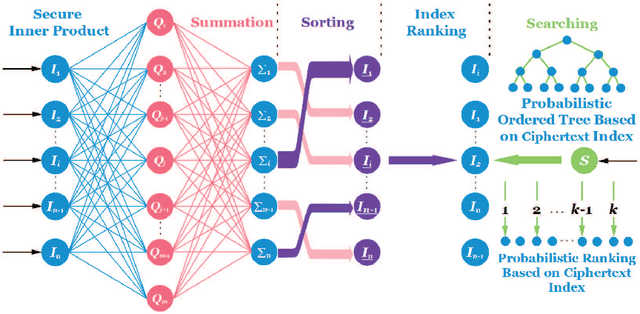
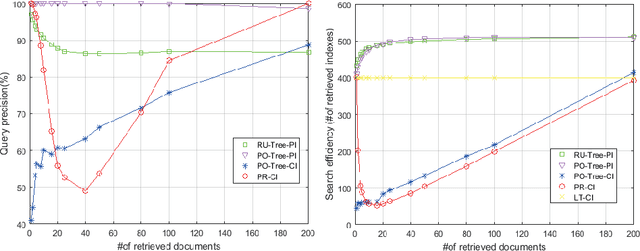
Abstract:In cloud security, traditional searchable encryption (SE) requires high computation and communication overhead for dynamic search and update. The clever combination of machine learning (ML) and SE may be a new way to solve this problem. This paper proposes interpretable encrypted searchable neural networks (IESNN) to explore probabilistic query, balanced index tree construction and automatic weight update in an encrypted cloud environment. In IESNN, probabilistic learning is used to obtain search ranking for searchable index, and probabilistic query is performed based on ciphertext index, which reduces the computational complexity of query significantly. Compared to traditional SE, it is proposed that adversarial learning and automatic weight update in response to user's timely query of the latest data set without expensive communication overhead. The proposed IESNN performs better than the previous works, bringing the query complexity closer to $O(\log N)$ and introducing low overhead on computation and communication.
Multi-owner Secure Encrypted Search Using Searching Adversarial Networks
Aug 11, 2019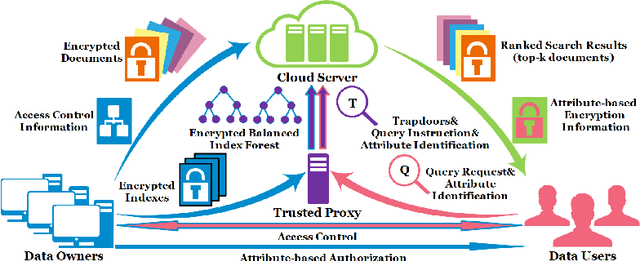

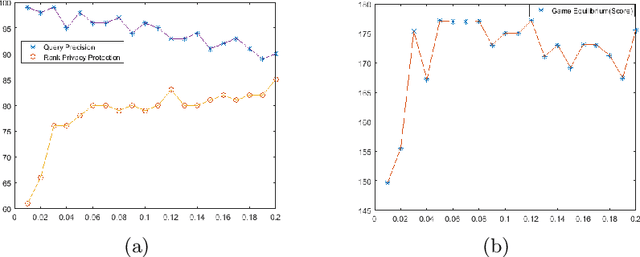
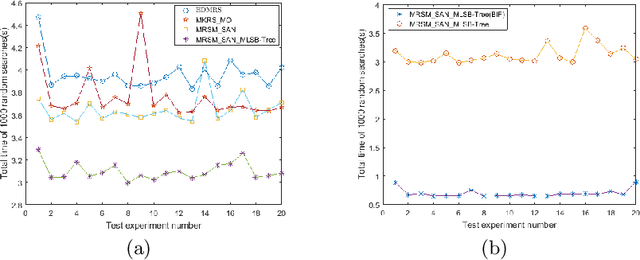
Abstract:Searchable symmetric encryption (SSE) for multi-owner model draws much attention as it enables data users to perform searches over encrypted cloud data outsourced by data owners. However, implementing secure and precise query, efficient search and flexible dynamic system maintenance at the same time in SSE remains a challenge. To address this, this paper proposes secure and efficient multi-keyword ranked search over encrypted cloud data for multi-owner model based on searching adversarial networks. We exploit searching adversarial networks to achieve optimal pseudo-keyword padding, and obtain the optimal game equilibrium for query precision and privacy protection strength. Maximum likelihood search balanced tree is generated by probabilistic learning, which achieves efficient search and brings the computational complexity close to $\mathcal{O}(\log N)$. In addition, we enable flexible dynamic system maintenance with balanced index forest that makes full use of distributed computing. Compared with previous works, our solution maintains query precision above 95% while ensuring adequate privacy protection, and introduces low overhead on computation, communication and storage.
Gait Recognition via Disentangled Representation Learning
Apr 09, 2019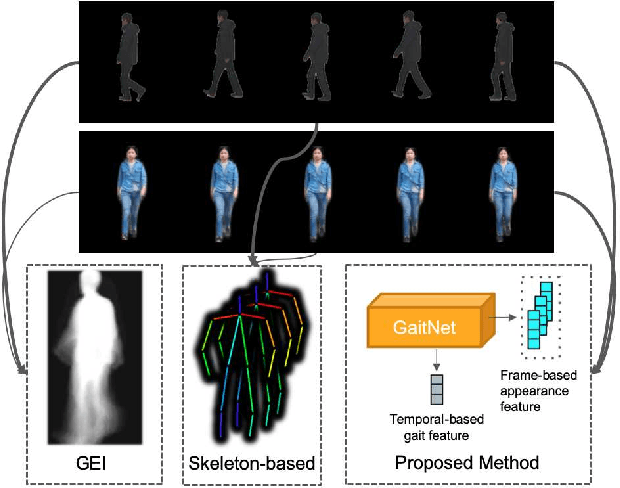

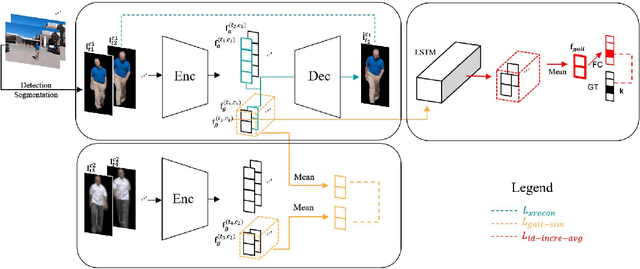
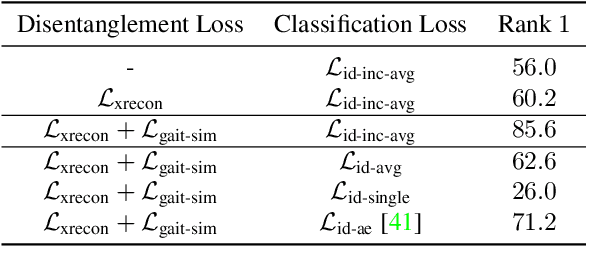
Abstract:Gait, the walking pattern of individuals, is one of the most important biometrics modalities. Most of the existing gait recognition methods take silhouettes or articulated body models as the gait features. These methods suffer from degraded recognition performance when handling confounding variables, such as clothing, carrying and view angle. To remedy this issue, we propose a novel AutoEncoder framework to explicitly disentangle pose and appearance features from RGB imagery and the LSTM-based integration of pose features over time produces the gait feature. In addition, we collect a Frontal-View Gait (FVG) dataset to focus on gait recognition from frontal-view walking, which is a challenging problem since it contains minimal gait cues compared to other views. FVG also includes other important variations, e.g., walking speed, carrying, and clothing. With extensive experiments on CASIA-B, USF and FVG datasets, our method demonstrates superior performance to the state of the arts quantitatively, the ability of feature disentanglement qualitatively, and promising computational efficiency.
Autonomous Quadrotor Landing using Deep Reinforcement Learning
Feb 27, 2018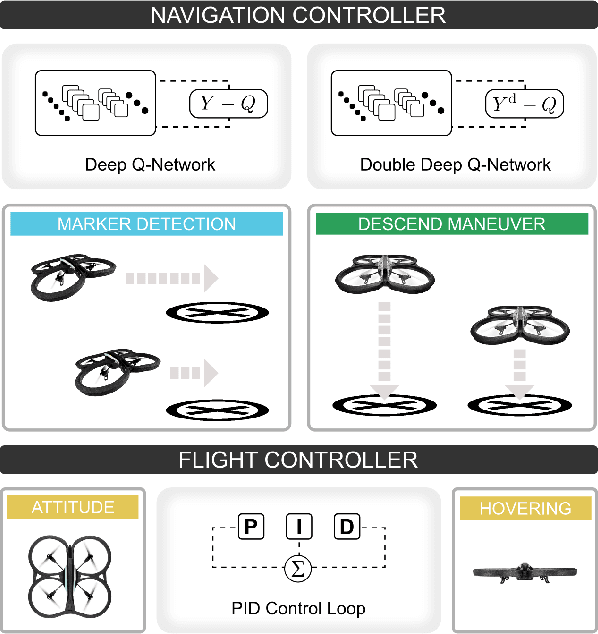
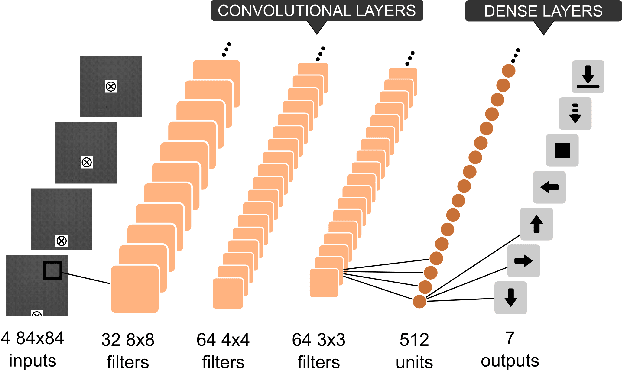
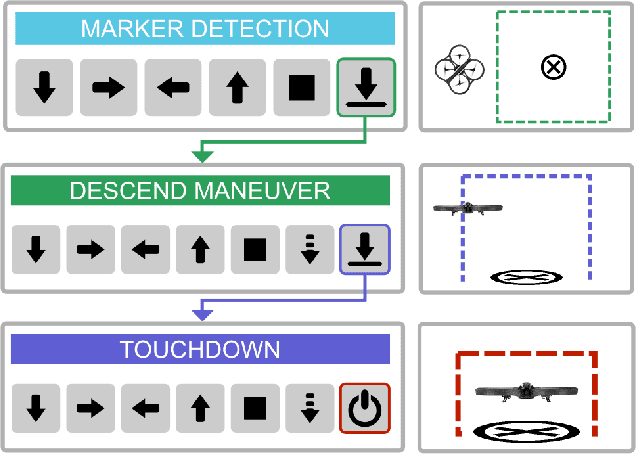
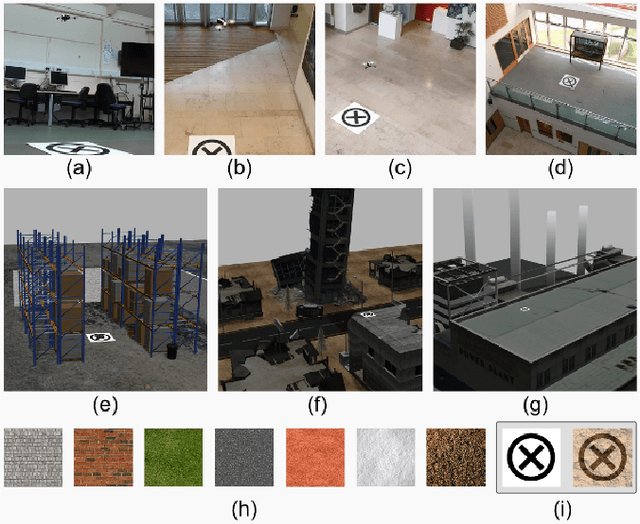
Abstract:Landing an unmanned aerial vehicle (UAV) on a ground marker is an open problem despite the effort of the research community. Previous attempts mostly focused on the analysis of hand-crafted geometric features and the use of external sensors in order to allow the vehicle to approach the land-pad. In this article, we propose a method based on deep reinforcement learning that only requires low-resolution images taken from a down-looking camera in order to identify the position of the marker and land the UAV on it. The proposed approach is based on a hierarchy of Deep Q-Networks (DQNs) used as high-level control policy for the navigation toward the marker. We implemented different technical solutions, such as the combination of vanilla and double DQNs, and a partitioned buffer replay. Using domain randomization we trained the vehicle on uniform textures and we tested it on a large variety of simulated and real-world environments. The overall performance is comparable with a state-of-the-art algorithm and human pilots.
 Add to Chrome
Add to Chrome Add to Firefox
Add to Firefox Add to Edge
Add to Edge